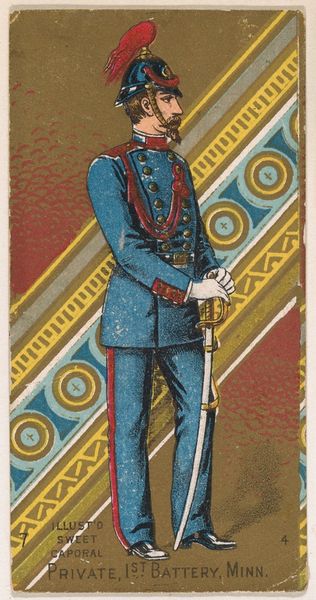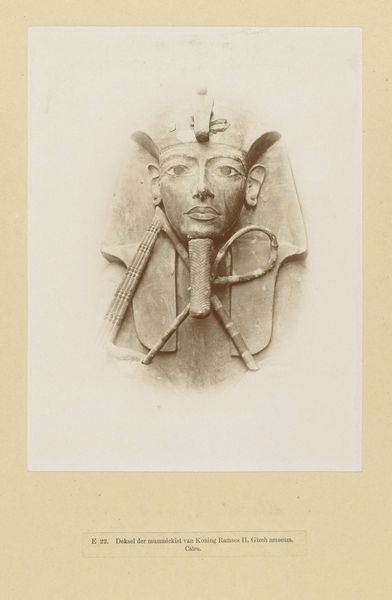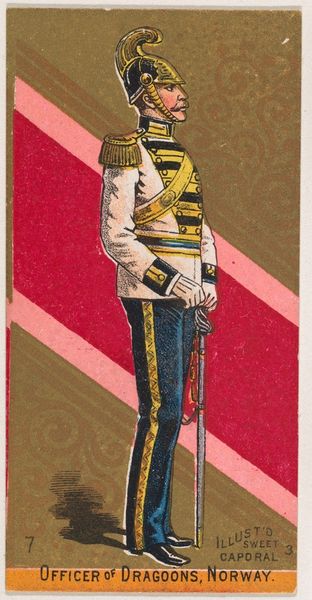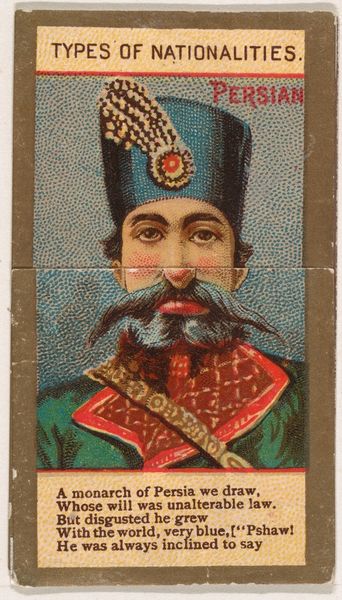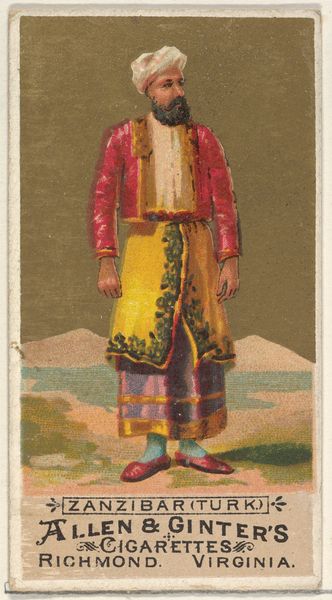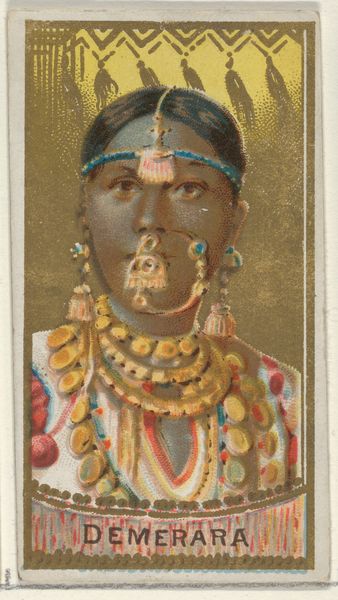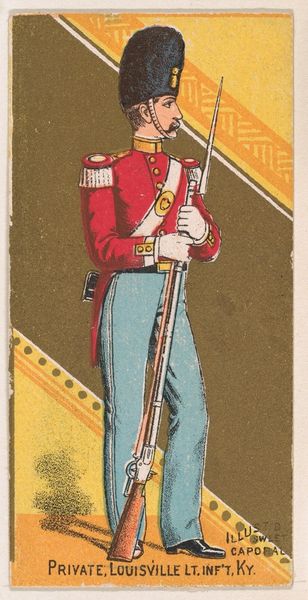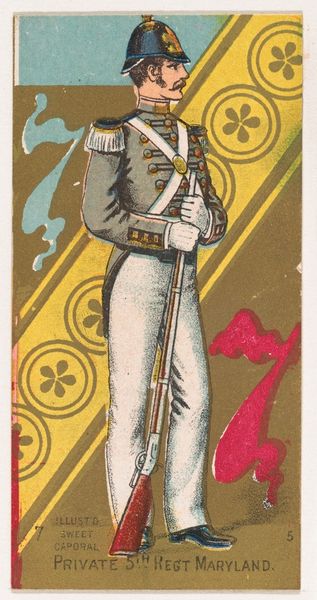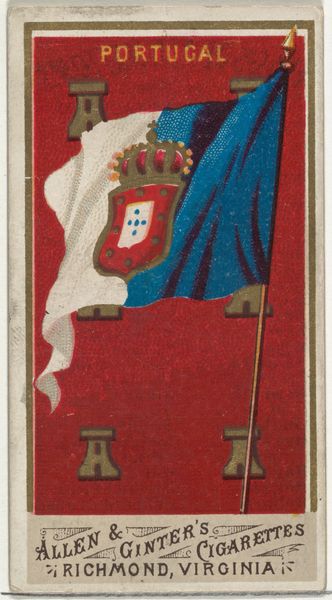
Egyptian, from Types of Nationalities (N240) issued by Kinney Bros. 1890
0:00
0:00
drawing, coloured-pencil, print
#
portrait
#
drawing
#
coloured-pencil
# print
#
ancient-egyptian-art
#
coloured pencil
#
ancient-mediterranean
#
19th century
#
men
#
academic-art
#
miniature
Dimensions: Sheet (Folded): 2 11/16 × 1 7/16 in. (6.8 × 3.7 cm) Sheet (Unfolded): 6 7/8 × 1 7/16 in. (17.4 × 3.7 cm)
Copyright: Public Domain
Curator: Here, in this rather curious print from 1890 by the Kinney Brothers Tobacco Company, we see an "Egyptian" from their "Types of Nationalities" series. It's quite small, almost like a miniature portrait rendered with colored pencils. Editor: The word "quaint" springs to mind. It possesses this strange, otherworldly innocence, as if time itself has been pressed between its pages. But there is also something unsettlingly still about his pose. Curator: Absolutely. Let's look closer. We see this figure, presumably intended to represent an ancient Egyptian ruler, holding the crook and flail—symbols of kingship. But he also bears a rather neutral expression. Editor: The figure's expression clashes starkly with the heavy symbolism and overt display of power, almost neutralizing his aura. And how fascinating is the choice to cross the royal insignias in a gesture of containment! Curator: The rendering itself, in colored pencil and print, blends a commercial, almost mass-produced aesthetic with the gravity we typically associate with ancient art. There's an incongruity, wouldn't you say? Editor: The flat rendering emphasizes surface over depth, flattening meaning just as surely as it flattens perspective. Curator: One begins to wonder: is this image about representation or perhaps a reflection of the late 19th century's perception of the 'Orient'? Editor: I see your point. Perhaps this card serves as both, as an exercise in power. This card, then, not only captures a historical interpretation of Egyptian culture but it reveals and disseminates the dominant social ideologies embedded in these images, too. Curator: An exercise, exactly. I’ve always found this work to be oddly compelling in how it seems caught between reverence and something not quite like cultural appropriation, more like digestion. Editor: Indeed. There's an aftertaste here, complex and slightly troubling. The charm lies perhaps, ironically, in its disquiet.
Comments
No comments
Be the first to comment and join the conversation on the ultimate creative platform.
